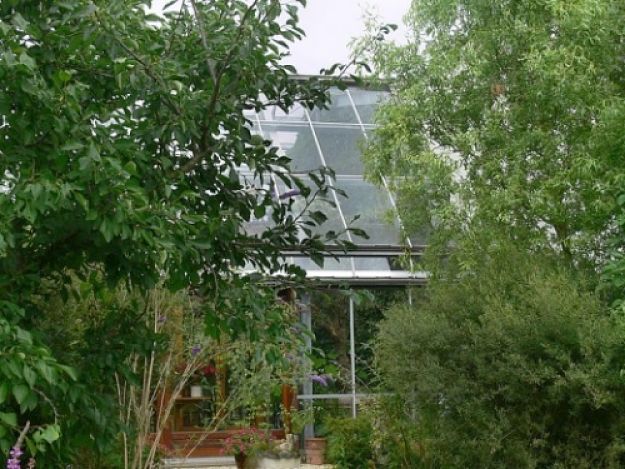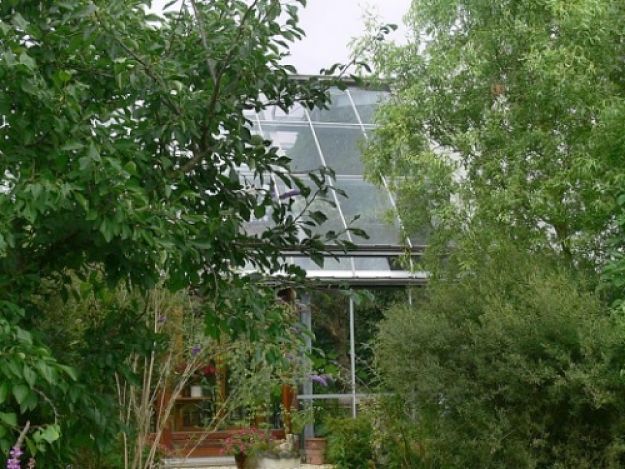Protecting Your Garden from Heat Stress and Drying Winds
Pot plants, hanging baskets and vertical gardens are especially susceptible as the soils are more vulnerable and prone to heating than the soil in the ground. Plants around the edges of garden beds are also more exposed and vulnerable.
This article provides a series of tips to follow to prevent damage to your gardens, plants in pots and containers, indoor plants and vertical gardens.
Preventing Heat Stress for Plants in Pots, Containers and Baskets
Any plants in containers are very susceptible, especially hanging baskets and any pots in more exposed positions.
You should consider moving them into more shaded positions or adopting more frequent and more thorough watering.
High temperatures themselves are issues as well as loss of moisture. There are a variety of water gels or water crystal products available that store water in the soil. You can also device or buy watering bottles than can be added to the top of pots, rather like bird watering bottles.
Adding extra mulch to the top of the plants can reduce evaporation. You should also consider wrapping pots in bark, hessian or other materials to insulate them from the heat.
When a heats spell looms always target the pot plants and baskets first. Water twice or three times daily. Buy several high quality moisture meters and dot them strategically around the garden in vulnerable spots to guide your watering regime.
Check your Irrigation or Watering System and Run Regularly at Night
Use your irrigation system regularly at night, or early in the morning, to minimize the run time needed for a deep watering. Times vary, and so it pays to use a moisture meter in the soil. Test for 'blind spots' where the waterings is inadequate, dry spots and 'shadow' areas. Check the sprinkler heads and drippers thoroughly to ensure they are working properly and consistently.
To test whether your plants are getting enough water, place empty plastic containers or cups around the area being watered. After running the sprinklers, you should see a minimum of 10mm (1/4 inch) of water in the containers, which shows you have watered adequately.
Check for evenness of the watering and replace heads for areas that get low levels of watering. But do not over-water your plants as this will not protect them.
More frequent watering is better, but it has to be relatively deep watering and nor shallow, especially in hot weather.
Saving Plants Affected by Heat Stress and Severe Wilting
Some pot plants and those on baskets, may get heat stressed and start to wither and die. It is difficult to save them if they have withered significantly, but it is worth a try.
Fill a bucket with a relatively strong solution of Seasol, or similar. Seasol is based on giant kelp and it has properties need to help plants recover. Insert the pot plants and baskets into the mixture and let soak for 10-15 minutes to fully saturate the roots.
Light pruning of heat-stressed plants, or vulnerable plants in the exposed areas of the garden is also a good idea, as it lowers the amount of foliage than releases moisture to the atmosphere and must be replenished from the plant's roots Discover the best time to grow vegetables in your growing zone to avoid heat stress problems.
Use of Mulching and Shade Cloth to Protect Plants in Hot and Dry Weather
Mulching is very effective in retaining moisture in the soil and keeping it cool.
Covering pot plants or areas of the garden with 50 -70 per cent shade cloth is also very effective for protecting plant vegetation from heat and drying from.
On very hot days, a thick blanket of good quality mulch (3-6 inches thick; 7-10 cm) will keep the soil temperatures down by 5-10 degrees.
The material used can vary considerably and can include bark, cocoa beans, leaves, wood chips, straw, pine needles, and compost mixed with grass clippings. Other materials are shredded newspaper, old carpet and clothing. Remember to water the mulch thoroughly to make it more effective as a 'blanket'
Shade cloth can be draped temporarily over vulnerable parts of the garden or can be installed permanently. You can also move pot plants into shaded areas or to temporary protected areas under shade cloth.
Test the Soil Moisture Levels Frequently
Soil moisture meters are relatively inexpensive and you can afford to have them dotted all around your garden to test when plants need to be watered.
You can use your fingers but the meters are much more reliable as they test the moisture level deep in the root zone of the plants.
Water your garden in the evening or early morning and focus on watering the soil, not the foliage.
Build troughs or 'moats' around the base of your plants, filled with mulch. This pool the water as insures the water penetrates into the soil rather than flowing off.
Use the moisture meters to indicate when you need to water the plants and when the soil moisture levels has been restored.
More Permanent Water Saving and Plant Protection Strategies for Hot Weather
Many of the tips above are temporary solutions.
If your garden has been badly affected by heat it is worthwhile looking at more permanent long term solutions for making your garden much more resilient.
Install a pond - These create a micro-climate in shaded and sheltered areas and keep the humidity levels higher and so reduce evaporation. large ponds can be used as emergency water supplies if there are water restrictions or bans. The ponds can be filled from roof runoff or other drainages.
Plant vegetables and shrubs in large pots - The advantage is that the pots can be moved into shaded and sheltered ares. Similarly you can add water crystals to the soil in the pots to boost the moisture holding capacity of the soil.
Install Shade Trees and Windbreaks - Revise you garden plan to add tall trees and shrubs to create shade and protect your garden from winds. You can also use vegetation, hessian and shadecloth screens to provide wind breaks. Remember that it is the hot winds, rather than the hot temperatures that do most of the damage.
Improve your soil by adding Water Crystals and Compost - Soils rich in organic matter retained more water and dry out more slowly than low organic matter soils.
Add a better watering system - Improving your sprinkler or drip-irrigation systems will mean you can water more efficiently and reliably.
Replant your Garden with Plants that are More Resistant to Heat and Drought - Seeing plants die in hot weather is a great stimulus to replacing them with hardier plants that are less sensitive to heat and require less water. This may mean shifting to local native species that are adapted to the local climate. Consult the staff or your local nursery for advice about more tolerant plants that require less water
Consider Installing Rain water and Gray-Water storage Tanks that can be used during dry spells.
The trees, shrubs and other plants in your garden need extra protection from extreme heat conditions, drought and hot winds. Like many things, prevention is better than any cure or belated remedy for heat stress. It is very hard to overcome heat damage in plants. Most affected plants will not recover from even minor wilting. So don't leave it too long, or you may not be able to recover your damaged plants. Heat stressed plants may not show any early warning signs so it pays to get in early with soil moisture monitoring and a plan for action.

Well shaded gardens are more resilient to hot dry weather
Source: Sharktopus [CC-BY-SA-3.0], via Wikimedia Commons

Careful planning, soil moisture monitoring and effective deep watering can prevent damage from heat stress
Source: Francois Thomas [CC-BY-SA-2.0], via Wikimedia Commons

Garden ponds in sheltered areas creates local micro-environments that keep the humidity high and stops gardens drying out.
Source: Nowis (Own work) [CC-BY-2.5], via Wikimedia Commons